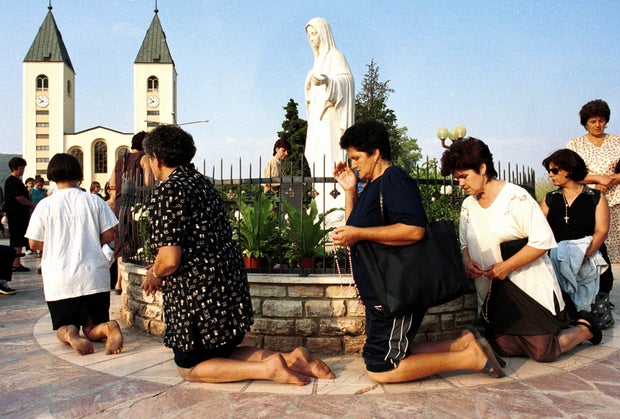Vatican City – The Vatican’s doctrinal office has released latest norms regarding alleged supernatural phenomena akin to apparitions of Mary, weeping statues and other supposed mystical events.
For centuries, apparitions of Mary at sites akin to Fatima, Portugal and Lourdes, France – eventually declared by church authorities as having divine origin – have change into the idea for shrines visited by thousands and thousands of pilgrims every year.
But in a latest document replacing the church’s 1978 rules, the Dicastery for the Doctrine of the Faith (DDF) declared that the Vatican and the local bishop will not formally declare such phenomena to be of divine origin. DDF chief Cardinal Victor Manuel Fernandez said in a press conference on Friday introducing the brand new norms that the Vatican would not affirm “with moral certainty that (such phenomena) originates from a choice willed by God in a direct way.” Instead, after careful evaluation, they might limit themselves to authorizing devotion and pilgrimages, he said.
The latest rules give the ultimate word to the Vatican, requiring the bishop to conduct an investigation, formulate his judgment, and submit it to the DDF. The DDF will then respond with one in all six possible outcomes. They range from a “nihil obstat” (“nothing stands in the best way”) allowing the bishop to advertise the phenomena and invite devotion and pilgrimage; to proceeding with caution since some doctrinal questions are still open; to advising the bishop to not encourage the phenomena; to declaring based on concrete facts that the phenomena doesn’t have divine origin.
Hidajet Delic / AP
Fernandez said that since examination of alleged religious phenomena took a few years, these latest rules would help the church reach decisions way more quickly, which is important in the web age where such claims spread in a short time.
In most cases, these apparitions have led to a growth in faith, resulting in shrines which might be at the guts of popular devotion, he said. But the cardinal also cautioned that they could lead on to “serious issues that harm the faithful” and may very well be exploited for “profit, power, fame, social recognition, or other personal interest.” The faithful may very well be “misled by an event that’s attributed to a divine initiative but is merely the product of somebody’s imagination, desire for novelty, or tendency to lie,” he said.
Neomi De Anda, executive director of the International Marian Research Institute on the University of Dayton, told the Associated Press the brand new guidelines represent a major but welcome change to the present practice while restating necessary principles.
“The faithful are able to interact with these phenomena as members of the faithful in popular practices of faith, while not feeling the necessity to consider all the pieces offered to them as supernatural in addition to the caution against being deceived and beguiled,” she said in an email.



